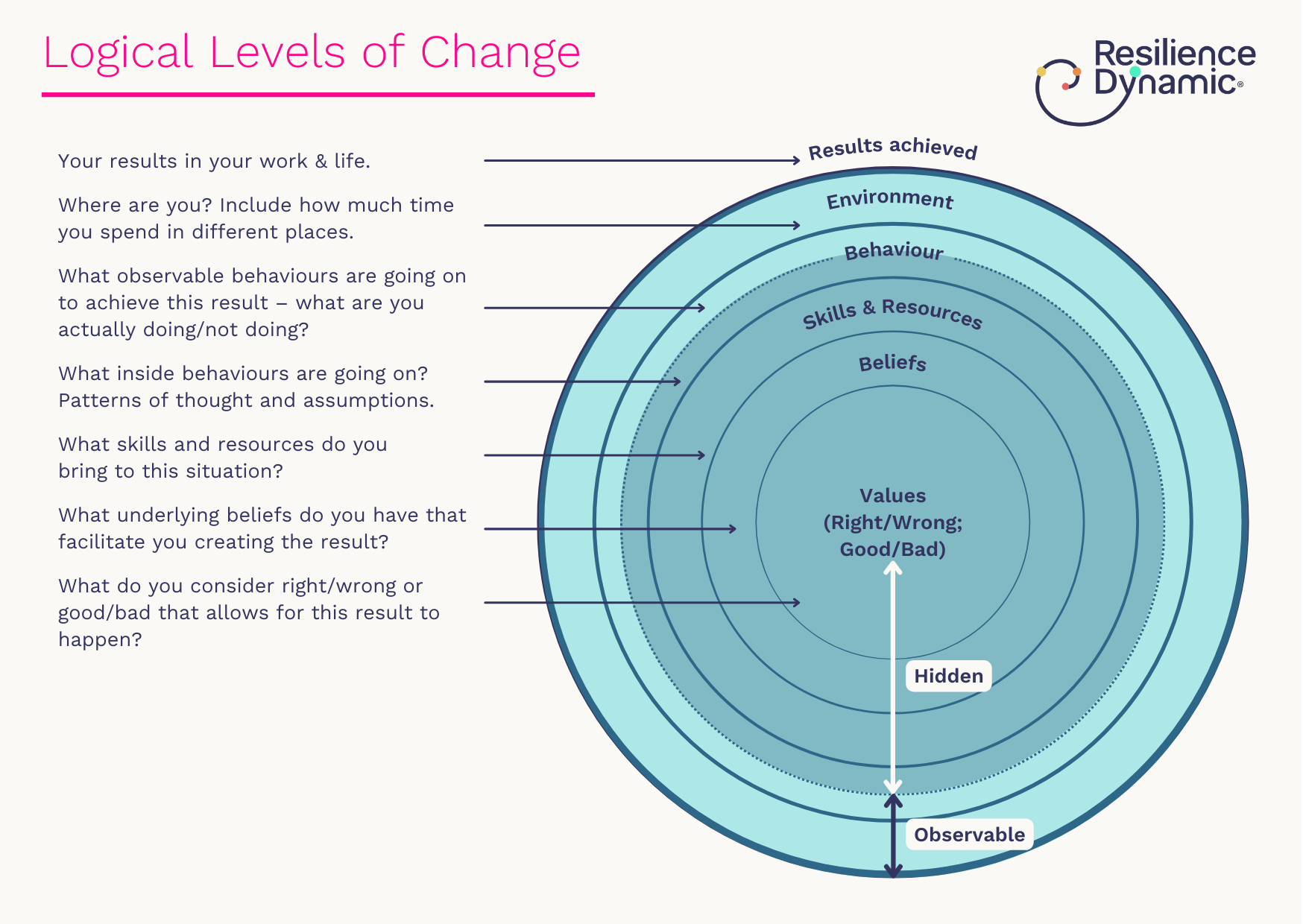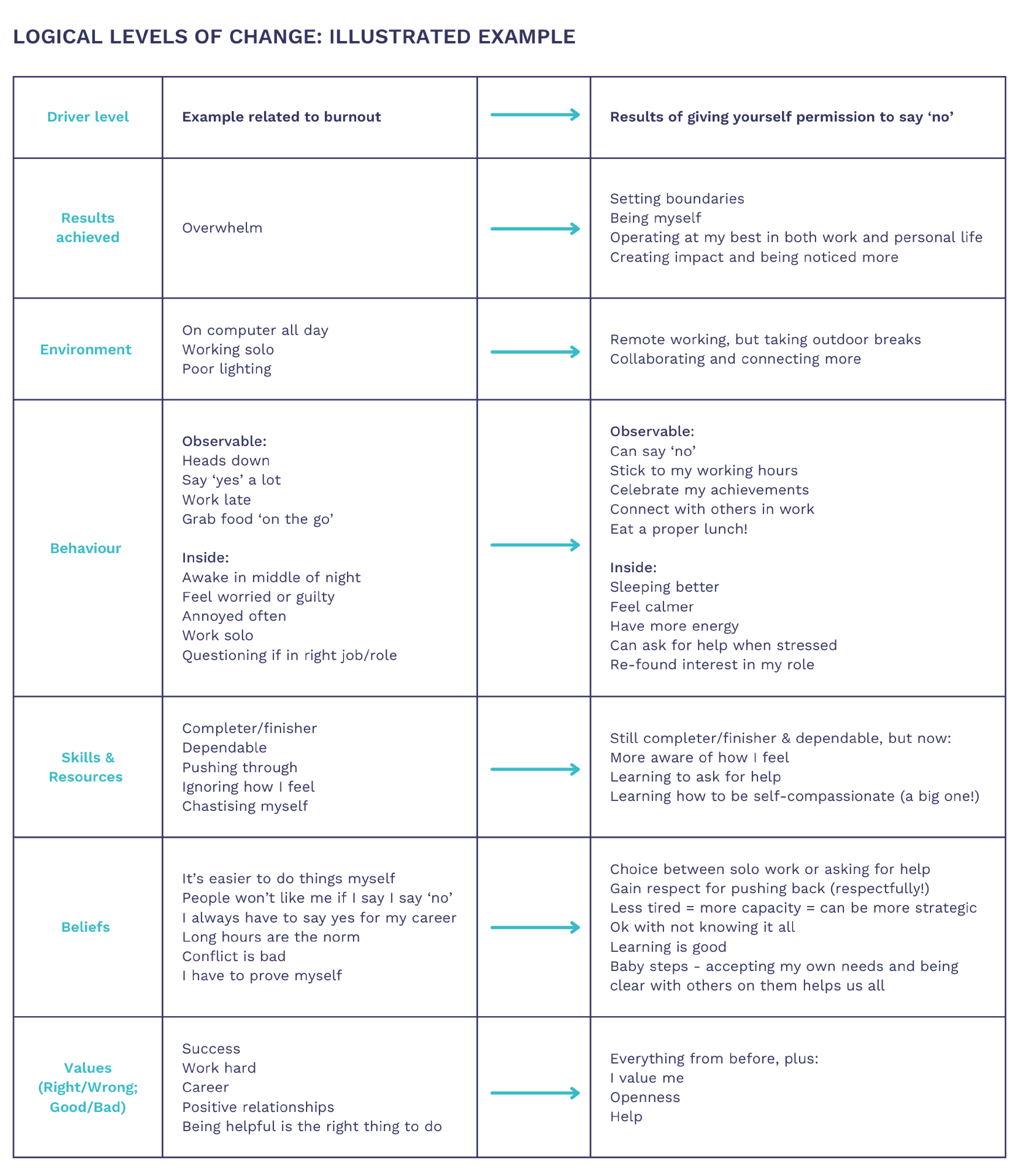Give Yourself Permission
The issue of not setting healthy boundaries is one of the root causes of burnout. We offer a practical approach to give yourself permission to maintain a healthy level of effort in work and shift away from overwhelm.
Do you find yourself feeling run ragged by everything you have promised to do in your work?
Maybe you think because everyone around you seems to work really hard and is as tired as you are, it’s actually normal and you should just put up with it?
Whilst there may be social norms to work long hours and ‘go above and beyond‘ within your organisation, not setting boundaries for yourself will lead to a drop in your performance and most probably some level of exhaustion. The Resilience Dynamic sees the issue of not setting healthy boundaries as one of the root causes of burnout.
What is Burnout?
Burnout is the consequence of individuals fully investing themselves in their job, to the point where their identity becomes intertwined with their role. The burnout process is often supported by organisations that encourage long working hours to achieve, until there is an eventual depletion of the individual’s internal resources.
– Insights from Resilience Dynamic research interviews and analysis.
The Impact of Burnout
The Resilience Dynamic has been researching the drivers behind burnout using a combination of our quantitative and qualitative research methods, plus triangulating our findings against business and academic research. The insights are consistently showing burnout is on the rise, and the cause is primarily around two key drivers: workload and toxicity of workplace culture.
- The impact of demand being greater than people’s felt capacity leads to a whopping 80% rise in stress and a drop of 33% in energy¹
- 69% of C-suite executives are so stressed they are considering leaving²
- Gen Z are more likely to feel this than older generations³
- On top of that, remote working is upon us big time, and is creating an acute issue where 69% of remote employees are experiencing burnout; 86% have experienced high levels of exhaustion⁴
The Impact of Burnout
If you want to do a simple self-assessment of your own resilience, click here to try out our free Resilience Dynamic® Indicator.
You may fall into the above criteria:
- Do you feel your workload is just continually piling up, without you being able to get on top of it, and instead stress is overtaking your life? You are not alone as the stats above show. The good news is that if you recognise the issue, you are already on the journey to shift away from burnout. Bravo you. And you can act to take small, actionable steps to lower the risk.
- Are you an Executive? Do read this article to see where you have opportunities to change things for yourself. You may be kidding yourself that things are ok, but deep down be increasingly concerned that how you are operating is not sustainable, and wondering how on earth can you make the change you need when so much seems at stake?
- Are you Gen Z? You may be feeling like everyone has got this, but you are not alone. Whilst you may have skills to hone like self-awareness, communications and assertiveness, understanding the drivers for being able to set boundaries, versus not giving yourself permission is going to help. Get stuck in now, and save yourself a whole load of grief!
- Are you a remote worker? You definitely need to be clear on boundaries, because the physical boundary of work and home does not exist, so there will be leakage across both parts of your life.
If you are one of those experiencing burnout, you will probably know you’re not setting yourself up to maintain a healthy level of effort in work. You might read tips and tools to mitigate against the process but you still haven’t managed to actually act on these. You have not yet asserted your own needs in work.
How do you start?
Start Practical, Then Go Deeper
We offer a layered approach to your thinking about burnout. The approach demonstrates that the results you achieve are underpinned by different drivers, each one ‘deeper’ than the last. What’s brilliant about this approach is that you can start easy and practical, then shift to the next level. Every change, even small, will create a change to the result.
Note we base this work on the NLP model of Logical Levels of Change⁵. All of your results depend upon an interlocking set of drivers:

Below is an illustrated example of how this works in practice, creating the result of ‘Overwhelm’.
If you want to turn this situation around, look at the final column, the results of giving yourself permission to say ‘no’. You will see a very different set of results, even though this is early days in operating in a different way.

Can you see the differences across each of the layers? The lovely thing about making a change to create a different result can start small. You can start with the simplest step. Take a result you wish to change. List the drivers of how you are currently achieving that result, even though you want to change it. Then take one thing from your own list of drivers under ‘Environment’, and see if impacts how you feel.
Look at the “Results of giving yourself permission to say ‘no’” column in the table above for inspiration!
Environment
- Could you take a break at lunchtime and go for a walk? You could!
- Could you join in a group or lunchtime chat online with others at work? You could!
These changes may feel like small beer in comparison to how you are feeling because of the result you have – overwhelm or burnout. But each layer when executed opens out the next layer! By taking a break at lunchtime, or indeed eating properly at lunchtime, you might just feel more energised to talk to your boss about how you are feeling.
Small steps. And then go one layer down. Step by step you can de-risk burnout for yourself.
Activate: How Can We Help
The Resilience Dynamic helps leaders and organisations by building healthy, high performance. We know the steps involved in this, and can offer both leadership coaching together with data-led, scalable solutions that enable this across the entire workforce.

Author: Jenny Campbell Founder and CEO of the Resilience Dynamic
Follow Jenny on LinkedIn for more of her thoughts, resilience research, and ideas.
References:
- Resilience Dynamic ‘Pacing the Workforce According to Resilience’ 2023
- Deloitte Insights ‘The C-suite’s role in well-being’ 2022
- McKinsey Health Institute ‘Are You Solving the Right Problem’ May 2022
- Tinypulse.com: The State of Employee Engagement survey
- Robert B. Dilts ‘Changing Belief Systems with NLP’ 1990
Gain exclusive access to Resilience Dynamic in-depth insights
Extend your knowledge, expand your thinking into Healthy, High Performance.
Register today and get your free login to:
- Gain exclusive access to in-depth resilience insights.
- Download and share the insights with your friends and colleagues.
- Receive resilience in-depth insights and tools straight to your inbox, every month.
If you are already receiving our resilience tools via email but it's the first time seeing this exclusive access, do register. You'll get the new exclusive insights, plus be able to download all articles. Simply complete this registration form once to get your login details.
Read our privacy policy
